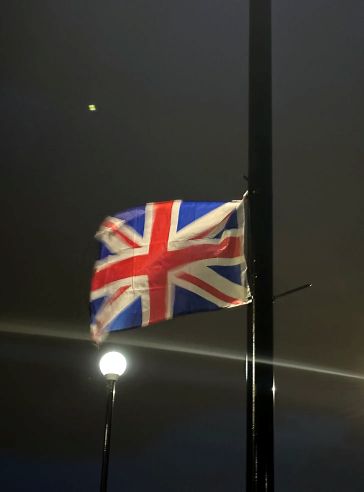
Dear Greta,
Congratulations on being appointed Screenwriter and Director for Netflix’s The Chronicles of Narnia. I really enjoyed your films Ladybird and Little Women and I am seeing Barbie this week as I have been away. It’s great to see a writer/director of your standing getting this crucial job.
I know you feel daunted to take on this job and I am writing to share five thoughts on what you need to bear in mind to make the series a success. I cannot claim to know anything about producing films or TV series. But I do know about Narnia.
Like millions of others, the books have been very significant to me. I read them first when I was a teenager, but I have continued to re-read them into adulthood. They have given me a reference point for some of my deepest questions about purpose, faith, life and death.
Disney/Walden Media’s Narnia series faltered after three films. The Lion, the Witch and the Wardrobe (2005) was a huge box-office hit but was followed by less successful adaptations of Prince Caspian (2008) and The Voyage of the Dawn Treader (2010). I thought all three films had many good qualities but the abandonment of the project less than halfway through shows the challenges of bringing Narnia to visual life.
So, with all this in mind, these are my five tips for how to create a great Narnia series:
1. Understand the thinking behind the books
The author, C.S. Lewis, was both an academic expert in medieval literature and a high-profile Christian author and communicator. He was a brilliant but complex man. Understanding him, his beliefs and his aims in writing Narnia is fundamental.
The two best books on this subject are Michael Ward’s Planet Narnia: the Seven Heavens in the Imagination of C.S. Lewis and Rowan Williams’ The Lion’s World: a journey into the heart of Narnia.
Ward’s book is a highly academic dissection of the hidden ‘key’ which Lewis implanted within each book (it was subsequently published in an abridged and more accessible version as The Narnia Code). The mish-mash of themes and diverse myths and legends in Narnia has puzzled and frustrated academic readers for decades. It was one reason why his friend J.R.R. Tolkein disliked the books so much. But Ward argues that the coherence and distinct atmosphere of each book comes from each being based on a different planet from the medieval cosmos. It is a thesis which has won almost unanimous affirmation.
Williams’ book is very different. It is a short but deep reflection on the theology that Lewis was conveying through the Narnia tales. His opening chapter discusses ‘The point of Narnia’ and he uses Shakespeare, Dostoevsky and Augustine to explore the ideas in the stories. He also assesses and responds to the criticism the books have faced.
2. Recreate the distinct atmosphere of each book
No other books have given me such a vivid experience of ‘going into another world’ as the Narnia books have. I now realise this is because of the most fundamental, yet intangible, strength of the books: the atmosphere, mood or tone that Lewis creates.
As Ward writes, quoting Lewis:
“Lovers of romances go back and back to such stories in the same way that we go ‘back to a fruit for its taste, to a region for its whole atmosphere – to Donegal for it Donegality and London for its Londonness.’ ”
Lewis was fascinated by literature which drew the reader into enjoyment of a story by indwelling it: seeing ‘through it’ rather than ‘at it’. Ward coins the term ‘donegality’ to describe this hidden element which establishes an intrinsic quality: ‘…the inner meaning of a romance cannot be flagged up by the author without altering its true nature. It has to remain hidden, woven into the warp and woof the story.’
The challenge for Netflix is that each Narnia book has a distinct ‘donegality’ based on the ancient themes and characteristics associated with the seven planets. This makes them very different to the Harry Potter books, which have a more uniform feel and consistency. Capturing the distinctive essence of each book will be vital to re-create the atmosphere Lewis aimed for.
3. Embrace Narnia’s spirituality
All adaptations of Narnia have to grapple with how they will handle the clear spiritual themes within the books. Faith makes corporations nervous but ‘theological due-diligence’ will be a key part of the creative and strategic discussions. I would advise Netflix to be bold and as true to Lewis’ thinking as possible.
In its 1980s, the BBC airbrushed spirituality out and this was one factor which made it a poor adaption. In contrast, Disney were braver in their films. As one newspaper wrote after the box office success of the first film ‘Disney finds a way to worship both God and Mammon’.
However, Disney never got to attempt some of the most theologically challenging scenes in the series. Narnia’s creation in The Magician’s Nephew and its apocalypse and depictions of heavenly re-creation in The Last Battle will be immensely difficult to convey on screen. These scenes will not work without confidence and clarity about what Lewis was trying to get across.
Rather than seeing them simplistically as allegories of Christian faith, it is best to see the stories as deeply infused with spiritual meaning. Rowan Williams answers the question ‘What is the point of Narnia?’ by saying that Lewis is doing nothing less than ‘trying to recreate for the reader what it is like to encounter God’. He is trying to
‘rinse out what is stale in our thinking about Christianity – which is almost everything.’
But this does not mean being preachy. Williams makes the point that ‘there is no church in Narnia, no religion even’.
Instead the spirituality is embedded within the ‘non-religious’ action: the bravery, treachery, sibling tension, bullying, reconciliation and forgiveness which are jam-packed into the stories. Spiritual truth is embedded and woven within each story.
4. Get the central character right
The character of Aslan stands right at the heart of the books. He is the only character who features in all seven books in the series, he sings the world into existence and presides over its end. He is the Beginning and the End, the Alpha and Omega of the whole story.
Aslan is very obviously an ‘authority figure’ but Lewis’ achievement is to craft a character who is both immensely powerful and enduringly attractive. And the key to this is the subversive nature of his authority. In an age where there is so much questioning of structural inequality and systemic injustice this is an aspect which Netflix should emphasise.
Rowan Williams draws this out with great insight: in Narnia ‘evil is cast as the ultimate force of reaction; we are invited to see ourselves as living ‘under occupation’ and summoned to join a resistance movement.’ Aslan’s wildness, his animality, represents the unpredictable world of grace which opposes the ‘ordered state of sin’ of the White Witch, King Miraz or (most deeply) the prisons we build for ourselves. Williams writes:
‘Transcendance is the wildness of joy; and the truth of God becomes a revolution against what we have made of ourselves’.
This is why Aslan’s victories lead to riotous partying. As Williams points out this is an ‘explosion of liberating festivity’ which (uncomfortably for some Christian readers) includes pagan revelry. At the end of Prince Caspian both the god Bacchus and a drunken Silenus make appearances to celebrate the liberation Aslan brings.
Aslan is the focus of hope not because he ‘saves souls’ but because he is the liberator of people and the whole of creation. Getting Aslan right will be a huge part of getting Narnia right.
5. Interpret it for a new audience
The Narnia books have faced criticism from authors such as Philip Pullman and J.K. Rowling. When Disney released the first film, Guardian columnist Polly Toynbee wrote an article titled ‘Narnia represents everything that is most hateful about religion’.
Rowan Williams engages head-on with the accusations that the books have overtones of racism and sexism and that they glorify violence. Whilst allowing for the fact that Lewis was an author of his time, he accepts the discomfort that modern readers will feel, for example, in how the ‘dark-skinned’ Calormenes are presented.
He also discusses one of the saddest parts of the stories: that former hero Susan is ‘no longer a friend of Narnia’ by the end of the series. Williams fairly defends this plot-line from those who claim it as evidence of Lewis’ misogyny.
More obviously, the old-fashioned dialogue of the children (‘Golly gosh’, ‘By Gum, you’re a beast’ etc) is a turn-off for modern audiences. The Disney films modified this well and used the backdrop of the Second World War at the start of each of the films to provide a more gritty context than conveyed in the books.
If you hold fast to the core of the books (see points 1-4) then stylistic changes and wise handling of aspects which are uncomfortable for today’s audience will enhance the series. All stories needs reinterpreting for a new audience.
The Great Story…
Narnia is a great story, but a key reason for its enduring popularity is because it reflects something of the Great Story of which we are all a part. As Lewis puts it himself in the conclusion of the final book:
“Now at last they were beginning Chapter One of the Great Story which no one on earth has read: which goes on for ever: in which every chapter is better than the one before.”
I wish you all the best with the production of the series and I look forward to seeing the result.
Thanks,
Jon Kuhrt, Narnia fan, South London (aged 51).
PS: You might be interested in this talk I gave on The Magician’s Nephew, my favourite Narnia book.
(This article was first published on Jon Kuhrt's Grace+Truth blog in August 2023).







